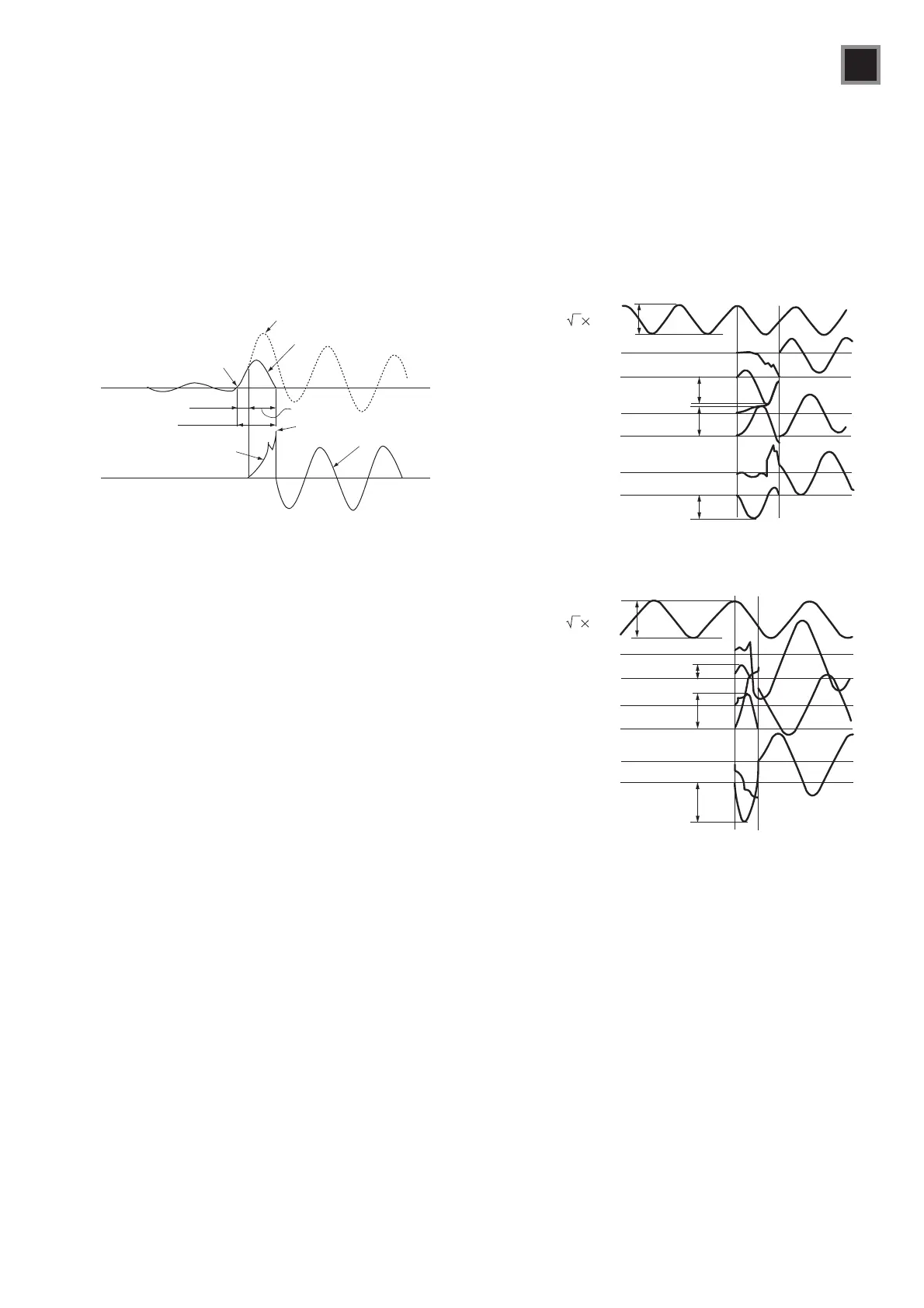11
2
Operating characteristics and performance
2-2 Breaking performance
Fig. 2-5 Three-phase short-circuit current breaking test
oscillograms 460V AC, 3-phase
Supply voltage
L
1 phase voltage
14.9 kA
39.5 kA
43.0 kA
Current-limiting type
Non current-limiting type
69.7 kA
65.6 kA
78.2 kA
L
1 phase current
L
2 phase voltage
L
2 phase current
L
3 phase voltage
L
3 phase current
2 2 460 V
2 2 460 V
Supply voltage
L
1 phase voltage
L
1 phase current
L
2 phase voltage
L
2 phase current
L
3 phase voltage
L
3 phase current
2-2 Breaking performance
2-2-1 Short-circuit current breaking
Fig. 2-4 illustrates how a short-circuit current is broken.
Fig. 2-4 Short-circuit current breaking
Current
Voltage
Arc voltage
Arcing time
Restrike voltage
Recovery voltage
Available short-circuit current
Time to open contact
Total opening time
Beginning of
short-circuit fault
Actual short-circuit current
to be broken
When a short-circuit fault occurs and a short-circuit current
flows, the instantaneous trip device is actuated to quickly open
the contacts. An arc is generated between the contacts the
moment the moving contact separates from the stationary
contact.
The rapid movement of the moving contact away from the
stationary contact draws the arc rapidly across the arc horn
and into the arc quencher. The arc lengthens as the distance
between the contacts increases, until the electromotive force
generated between the grid and arc current drives the arc
deeply into the V-notches in the magnetic sheets composing
the arc quencher’s grid. The grid thus splits the arc into a
series of shorter arcs. With the arc stretched and split up in
this way, the resistance and the arc voltage increase due to
the combined action of cooling by the grid, the rising pressure
in the arc quencher, and the cathode effect. The arc is
extinguished (quenched) when the arc voltage becomes larger
than the supply voltage. At this time, a voltage equivalent
to the supply voltage (recovery voltage) appears across the
contacts. This condition is called completion of breaking.
In general, a circuit in which a large short-circuit current
occurs has a low power factor. If the arc is quenched
at the zerocrossing point of the short-circuit current, a
circuit-constant, dependent oscillating transient voltage is
superimposed on the recovery voltage that appears across
the contacts. This voltage is called the restrike voltage and
can cause rearcing between the contacts if the isolation
between the contacts has not recovered sufficiently. To achieve
complete breaking without rearcing, powerful arc-quenching
action and sufficient contact spacing must be ensured quickly.
To achieve current-limiting breaking, current-limiting MCCBs
use the electromotive force generated across two parallel
conductors to quickly open the contacts without waiting for
instantaneous trip, while increasing the arc voltage in an
extremely short time. In DC circuits, the current does not fall
to zero as in AC circuits. The arc voltage must be increased
through a powerful arc quenching effect to suppress the
current: arc quenching is complete when the supply of energy
needed to maintain arcing is no longer available.
Fig. 2-5 shows the three-phase short-circuit current breaking
test oscillograms.

